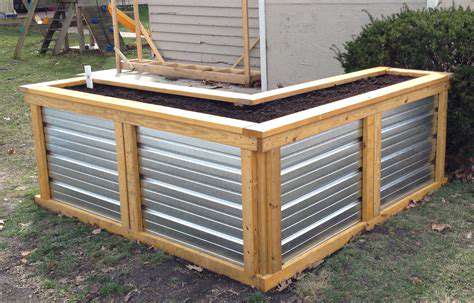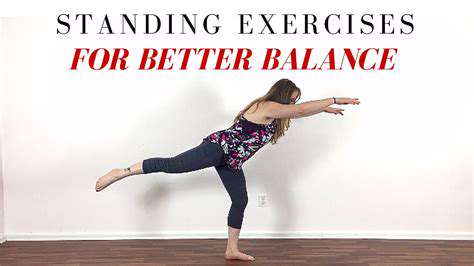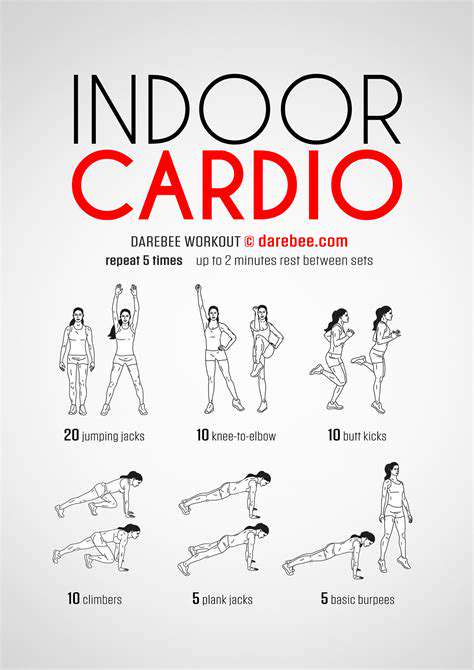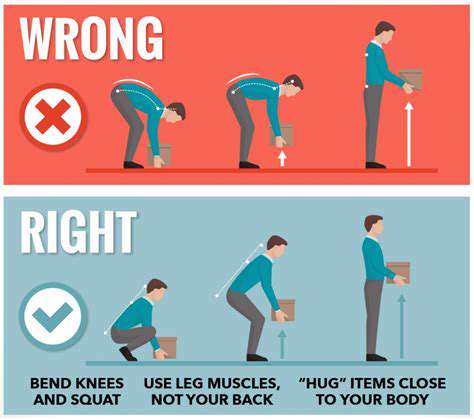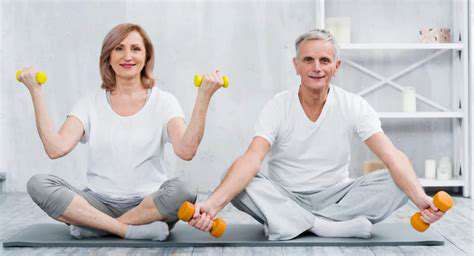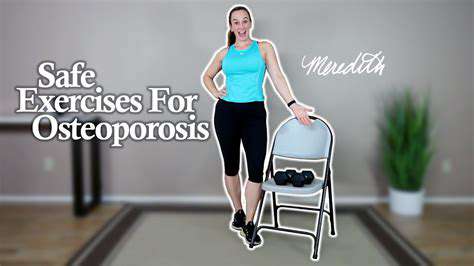How to Incorporate Functional Training into Your Daily Routine
Understanding the Benefits of Functional Exercises
Functional exercises, unlike isolated movements targeting specific muscles, mimic real-life activities. This translates to improved everyday tasks like carrying groceries, climbing stairs, and even playing with your children. By engaging multiple muscle groups simultaneously, functional training enhances strength, balance, and coordination, making you more resilient and less prone to injury. This holistic approach to exercise is crucial for long-term well-being, especially as you age.
Furthermore, functional training can lead to a significant improvement in overall body awareness. As you learn to control your movements and engage core muscles more effectively, you develop a deeper understanding of how your body functions and moves. This enhanced body awareness carries over into other aspects of life, improving posture, and reducing pain associated with poor movement patterns.
Choosing Exercises Suitable for Your Fitness Level
The beauty of functional exercises lies in their adaptability. Whether you're a seasoned athlete or just starting your fitness journey, there are functional exercises perfect for your needs. Begin with simple movements like squats, lunges, and planks, gradually increasing the intensity and complexity as your strength and endurance improve. Consult with a fitness professional to tailor a program that aligns with your current fitness level and any existing health conditions.
Incorporating Functional Exercises into Your Daily Routine
Integrating functional exercises into your daily routine doesn't require hours at the gym. In fact, you can incorporate them into your everyday activities. For instance, try doing squats while getting dressed, or performing lunges while carrying groceries. These small, intentional movements can significantly contribute to your overall fitness goals.
Creating a Structured Workout Routine
While incorporating functional exercises into your daily life is beneficial, a structured workout routine provides more focused results. Schedule specific time slots for exercises like push-ups, rows, and deadlifts. These compound exercises work multiple muscle groups simultaneously, enhancing strength and endurance. Consistency is key; aim for at least 30 minutes of functional training most days of the week.
Prioritizing Proper Form and Technique
Correct form is paramount when performing functional exercises. Improper technique can lead to injuries and hinder your progress. Watch instructional videos, seek guidance from a qualified instructor, or consider working with a personal trainer to ensure you're executing exercises correctly. Focus on controlled movements and maintaining proper posture throughout each exercise.
Addressing Common Mistakes and Challenges
Many individuals find it challenging to integrate functional exercises into their routine due to time constraints or a lack of understanding. However, the key is to find ways to incorporate these exercises into your existing lifestyle, rather than feeling overwhelmed by creating an entirely separate routine. Breaking down exercises into manageable segments, scheduling short workout sessions throughout the day, and finding exercises that align with your interests can make the process more enjoyable and sustainable.
Tracking Progress and Making Adjustments
Monitoring your progress is crucial for staying motivated and achieving your fitness goals. Track your performance by noting improvements in strength, flexibility, and balance. Adjust your routine as necessary to keep challenging yourself while preventing plateaus. Listening to your body and acknowledging when you need to rest is just as important as pushing yourself to your limits.
Repetitive strain injuries (RSIs) are a significant concern in today's world, especially for those engaged in occupations requiring repetitive motions or prolonged exposure to forceful exertions. These conditions, often developing gradually, can cause debilitating pain and discomfort, impacting daily life and work productivity. Understanding the root causes of RSIs is crucial for prevention and effective management. The repetitive nature of the movements places immense stress on tendons, muscles, nerves, and ligaments, which can lead to inflammation, pain, and impaired function.
Making Functional Training a Habit: Tips for Success

Understanding the Benefits of Functional Training
Functional training, unlike isolation exercises, focuses on movements that mimic everyday activities. This approach strengthens the muscles used in tasks like lifting, carrying, and reaching, leading to improved overall strength and stability. By targeting multiple muscle groups simultaneously, functional training enhances your body's ability to perform real-world movements with greater efficiency and less risk of injury. It's crucial for daily life, from simple chores to more strenuous activities.
Building a Sustainable Routine
Consistency is key to making functional training a habit. Start with manageable sessions, perhaps 2-3 times a week, and gradually increase the intensity and duration as you progress. Finding activities you enjoy will make sticking to your routine easier and more sustainable in the long run. This could involve anything from bodyweight exercises to using resistance bands or light weights.
Incorporating Functional Training into Your Lifestyle
One of the beautiful aspects of functional training is its adaptability. You can integrate it into your daily life without requiring a dedicated gym time slot. Simple activities like stair climbing, gardening, or even carrying groceries can be considered functional training when performed with proper form and intensity. This approach helps to seamlessly integrate exercise into your existing routine, making it a long-term lifestyle change rather than a temporary fix.
Choosing Exercises for Optimal Results
A variety of exercises should be included in your routine to target different muscle groups and improve overall fitness. Consider exercises like squats, lunges, push-ups, rows, and planks, which engage multiple muscle groups simultaneously and mimic real-world movements. Focus on proper form over lifting heavy weights initially. Learning correct techniques prevents injuries and maximizes the effectiveness of the exercises.
Prioritizing Proper Form and Technique
Correct form is paramount when performing functional exercises. Improper form can lead to injuries and hinder the effectiveness of the workout. Seek guidance from a qualified trainer or online resources to ensure you're executing exercises correctly. A good trainer can provide tailored guidance and ensure you're maximizing your results while minimizing the risk of injury. This attention to detail is critical for long-term success and prevents future problems.
Overcoming Plateaus and Maintaining Motivation
As you progress, you may experience plateaus in your training. This is a natural part of the process, but it's important to adjust your routine to continue challenging your body. Introducing new exercises, increasing resistance, or modifying existing routines can help you break through these plateaus. Maintaining motivation is key to overcoming setbacks and staying committed to your fitness goals. Consider setting realistic goals and celebrating small victories along the way.
Tracking Progress and Measuring Success
Monitoring your progress is essential for staying motivated and ensuring you're seeing results. Track your workouts, noting the exercises performed, sets, reps, and any changes in your perceived exertion. Keep a journal or use fitness tracking apps to document your progress and identify areas where you need to adjust your routine. Regularly assess your progress to stay on track with your fitness objectives and identify any adjustments needed to maintain your momentum. This allows you to evaluate the effectiveness of your training and make necessary changes.
Beyond the Gym: Functional Training in Everyday Activities
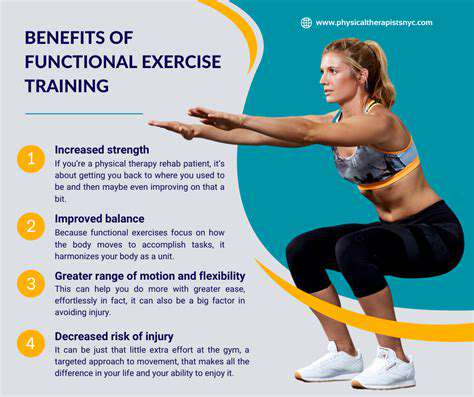
Beyond the Basics: Understanding Functional Training
Functional training goes beyond isolated exercises, focusing on movements that mimic real-life activities. This approach emphasizes strength, power, and stability, enabling you to perform daily tasks with ease and reducing the risk of injuries. It's about training your body to work as a cohesive unit, rather than isolating individual muscles. This holistic approach is crucial for overall well-being and injury prevention.
The Importance of Core Strength
A strong core is the foundation of functional training. It's not just about six-pack abs, but about developing deep core muscles that stabilize the spine and pelvis. This stability is essential for maintaining proper posture, preventing back pain, and enhancing performance in various activities. Core strength plays a vital role in almost every movement you make, from lifting groceries to playing sports.
Adapting to Everyday Movements
Functional training exercises are designed to mirror everyday movements. Activities like squatting, lunging, pushing, pulling, and twisting are all incorporated. This ensures that your training translates directly into improved performance in daily tasks. This practical approach to fitness makes it far more applicable to real-world situations, leading to tangible results.
Injury Prevention and Rehabilitation
Functional training is exceptionally beneficial for injury prevention. By strengthening the muscles surrounding joints and improving stability, you reduce the risk of strains, sprains, and other common injuries. Moreover, functional exercises can be tailored to rehabilitate injuries, helping the body recover strength and mobility in a safe and effective way. Targeted exercises can help restore optimal function and prevent re-injury.
Improving Athletic Performance
Functional training is not just for everyday athletes; it's also a valuable tool for improving athletic performance. By enhancing strength, power, and stability, athletes can improve their speed, agility, and endurance. This approach boosts overall athleticism and reduces the risk of sports-related injuries. This translates to better performance in any sport or activity that requires movement and strength. Proper form and technique are emphasized, leading to a more efficient and effective workout.
Improving Balance and Coordination
Functional training exercises frequently incorporate balance and coordination challenges. These exercises help to improve proprioception, your body's awareness of its position in space. Improved balance and coordination lead to better stability and reduced risk of falls, particularly important as we age. This is crucial for maintaining independence and preventing age-related mobility issues.
The Role of Flexibility and Mobility
While strength is important, functional training also emphasizes flexibility and mobility. Exercises that improve joint range of motion are incorporated to enhance movement efficiency and prevent stiffness. Improved flexibility and mobility are vital components of functional training, enabling a greater range of movement and preventing injuries. This holistic approach ensures a well-rounded fitness program.

